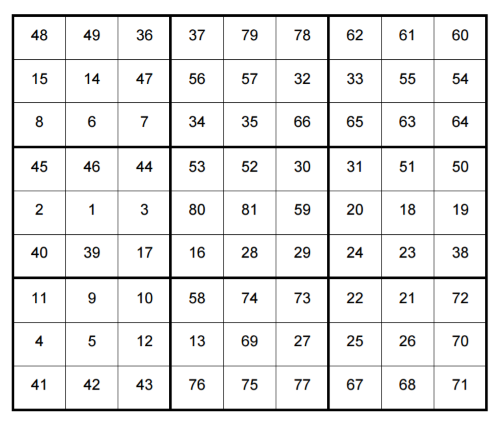Or search by topic
Number and algebra
Geometry and measure
Probability and statistics
Working mathematically
Advanced mathematics
For younger learners
Multiples Sudoku



- Problem
- Getting Started
- Student Solutions
- Teachers' Resources
In the third row, 30 and 18 appear on adjacent border lines. Which set of three numbers could be placed in the first three cells of that row?
In the fifth row, 8 and 18 appear on adjacent border lines. Which set of three numbers could be placed in the last three cells of that row?
Alison and Charlie kept a record of the order in which they filled the Sudoku.
They filled the cell marked 1 first, then the cell marked 2, then the cell marked 3...

You might like to retrace their route to fill in the cells in the same order, though this is just one possible route through the problem.
You can print their journey here.
Related Collections
You may also like
Adding All Nine
Make a set of numbers that use all the digits from 1 to 9, once and once only. Add them up. The result is divisible by 9. Add each of the digits in the new number. What is their sum? Now try some other possibilities for yourself!
Double Digit
Choose two digits and arrange them to make two double-digit numbers. Now add your double-digit numbers. Now add your single digit numbers. Divide your double-digit answer by your single-digit answer. Try lots of examples. What happens? Can you explain it?
Repeaters
Choose any 3 digits and make a 6 digit number by repeating the 3 digits in the same order (e.g. 594594). Explain why whatever digits you choose the number will always be divisible by 7, 11 and 13.

